Every marketer wants to maximize their success rates. Every inbound marketing campaign requires a strong content strategy. Without a well planned campaign we reduce our chance of success.
An omnichannel inbound marketing campaign plan will keep you on track to create B2B campaigns that delight and engage with your audiences through content delivered through multiple channels…regardless of the challenges and demands we encounter on a day-to-day basis.
Investing the time to map out your inbound campaign strategy will help you manage and execute your digital marketing initiatives. To explore this concept further, we have created a fictitious B2B company that is launching a new marketing product. Our goal is to create an omnichannel content campaign strategy around this new offering that aims to revolutionize how businesses think about marketing productivity. Before we contemplate content topics, we must 1) conduct research to define our objectives. 2) identify our audiences, and 3) outline our content strategy elements.
Step One: Begin With a Realistic Objective
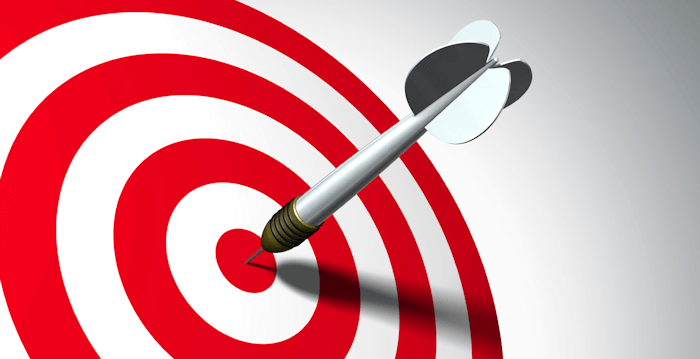
In order to be successful, we must define a realistic objective, e.g. Deliver 300 MQL (marketing qualified leads) per month to sales by the end of 2nd Quarter. Is this a realistic objective? Let’s do the math… as an example, let’s say we are currently receiving 25,000 visitors per month to our website and 2.5% (625) are converting into TOFU (top of funnel marketing leads), MOFU (middle of the funnel marketing leads, and BOFU (bottom of the funnel marketing) leads. On average 32% or 200 leads, convert into MQLs (marketing qualified leads) that pass over to sales. To achieve our 6 month goal of 300 MQLs per month, we need to increase monthly MQLs by 33%.
Step Two: Identify Your Target Audiences
If you have not yet conducted an in-depth persona analysis, kick-off 2015 by making it a high priority to do so. I’m not talking about a persona bio such as Rosie the Riveter has 2.3 kids, runs 1.5 miles per day and her business objective is accelerating brand awareness. I am referring to identifying the roles of decision makers, the internal influencers to them as well as external influencers and promoters. We want to identify the specific interests, pain points and needs of each audience.
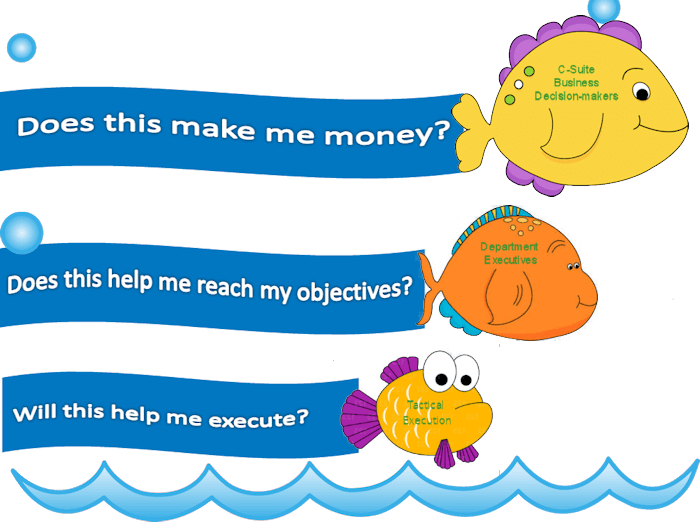
For example, in this inbound campaign model, we will identify decision makers as C-suite management, V.P. or Marketing Director as well the Brand Manager. Each of these roles could be a decision maker or they could be an influencer. Yet each of these roles may have a completely different perspective on the same pain point. For example, the CEO is focused on the business model, ways to reduce costs, generate revenue, expand market and financial stability. The marketing director could be focused on delivering KPI results while the brand manager may be more concerned with how to execute more effectively to deliver the results.
Step Three: Identify Your Elements
Several elements compose an omnichannel inbound marketing campaign on the path from first visit to your site, desire to learn more about you, consuming your content offers, becoming an opportunity, converting into a customer and ultimately becoming a loyal customer and brand advocate.
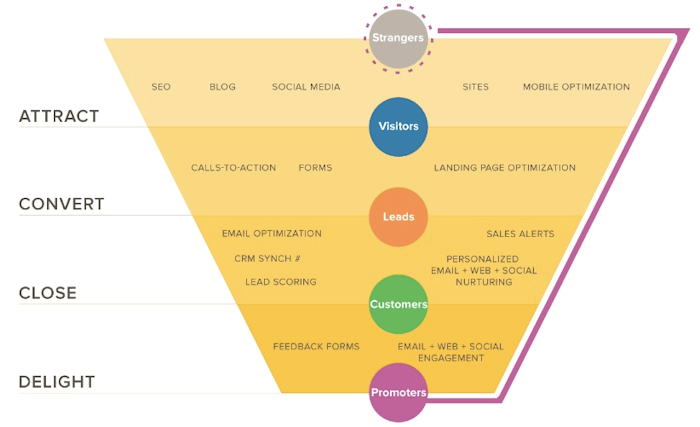
Make a list of all of the marketing elements that are relevant to this launch campaign over the 6 month period. Include elements designed to reach, engage, and promote through influencers and decision makers. Be sure to include all elements that are relevant to your audiences based on your content, assets, budget and bandwidth.
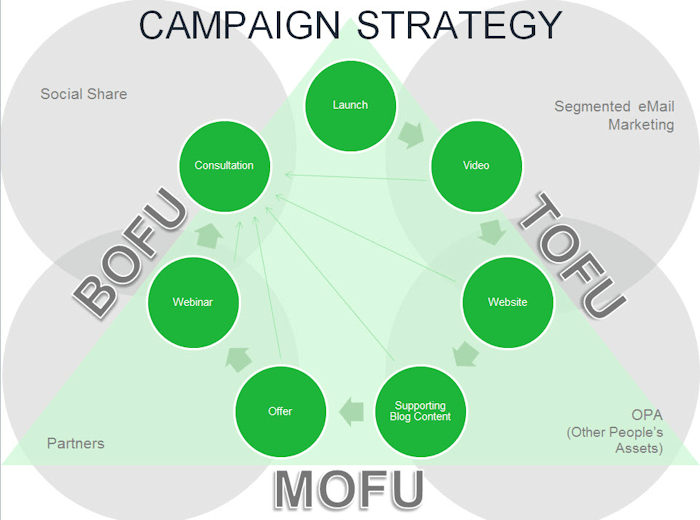
A list of campaign elements for this campaign may consist of:
- Website – 1 additional page under services, a full width and column CTA & additional panel on home page
- Blog content – 18 posts over a period of 6 months
- OPC (other people’s content) – 6 articles
- Video – 2
- Infographic -2
- Offers – 2 eBooks
- Webinars – 3
- On-going social media engagement through LinkedIn, Twitter & Facebook
- Email Marketing Strategy
- Pay per Click (PPC) Advertising
Step Four: Define Your Content Strategy
We now have a clear vision of what we want to achieve, along with the elements and channels with which we are going to execute. Only now do we have enough insight to execute a content strategy. Rachel Foster, a contributor to Content Marketing Institute defines the first step in content creation is to:
Align your content with your target audience.
In our persona analysis, in addition to audience roles, we identified industries. For our campaign, we are going to target Logistics firms and Industrial Manufacturing Equipment firms. Our content strategy overview looks like this:
3 voices in 2 industry groups with 75% of the content to be audience-driven and 25% of the content to be product-driven.
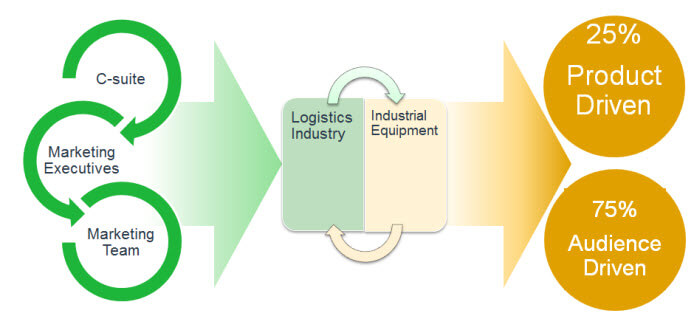
Now that you have the types of content, the audiences and the voices defined it’s time to align your content messaging to your audience. Start by building a list of topics. Identify the keyword themes relevant to your audiences and topics, and define the key theme drivers.
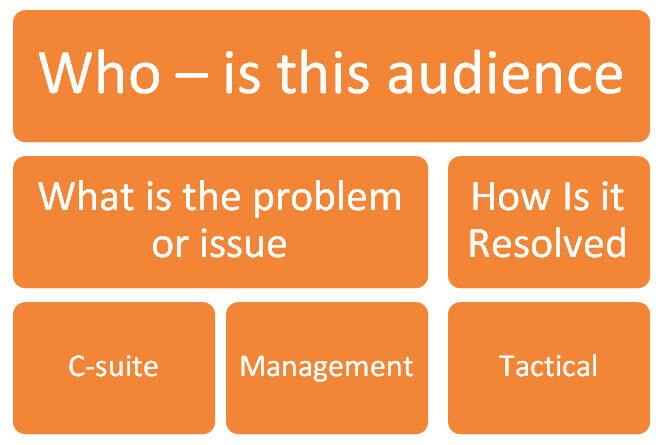
For example, if webinars are going to be the primary drivers and you are planning on having 3 webinars, each webinar may generate a 2 month timeline generating the following elements:
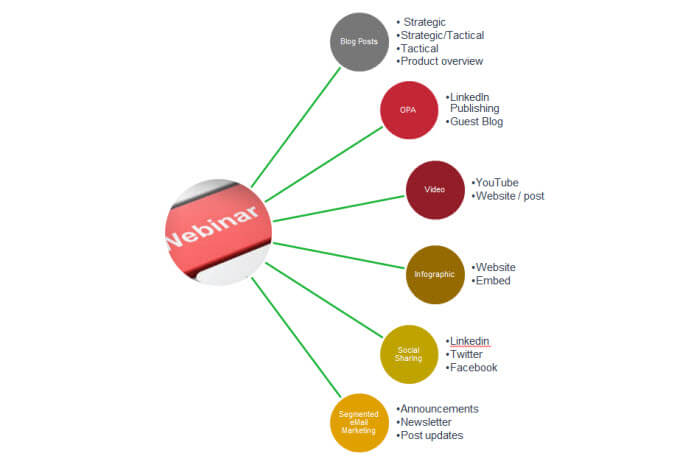
Step Five: Create a Strategic Level Blueprint
I highly recommended that you create a blueprint. It can be in a spreadsheet or a project management system such as Basecamp or Teamwork. You might also consider using external content strategists to help you identify, build and manage all aspects of your campaign. What is most important is identifying the elements and mapping out all the execution points, defining a timeline and assigning team members that will take responsibility for execution.
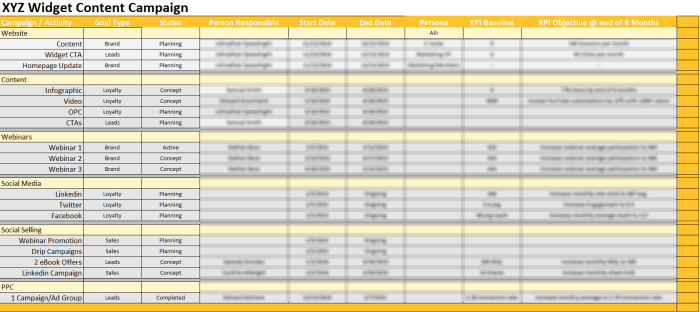
Step Six: Develop a Tactical Plan of Execution
Now that we have mapped out the strategic plan, we can develop a detailed, tactical execution plan complete with identifying who is responsible for each action, a timeline with due dates, along with all the elements associated with content creation, social media influencer marketing and email strategies. For this campaign, we have chosen 3 webinars as the driver of the overall strategy. This means we will have a tab for 3 sub-campaigns driving the strategy in 2 month time-lines. Because this campaign is omnichannel in scope, almost all the elements are connected to each of the webinar campaigns. You may also want to consider a tactical plan for videos, eBooks and social selling strategies.
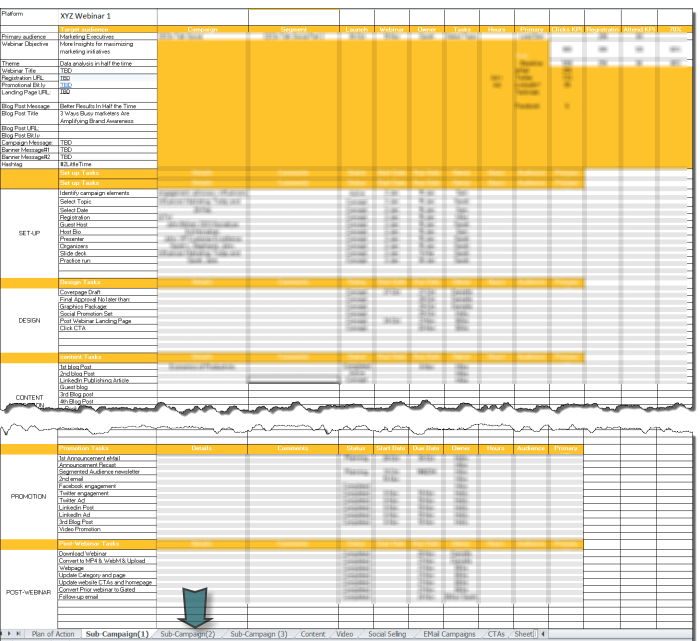
Stay On Track
Mapping out the 3-dimensional aspects of an omnichannel campaign strategy can appear to be mind-numbing. However, the rewards from the planning will outweigh the up front investment in terms of achieving your desired business goals. Your diligence will reward you with better results, smoother execution, more efficient reporting to your stakeholders and less stress.


